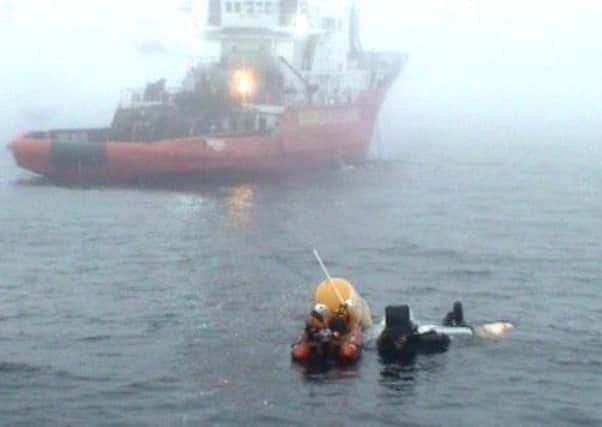Shetland helicopter crash: Safety advice ignored


The potentially life-saving kit was designed to stop crashed helicopters from “rolling over, completely inverted” and retain an air pocket to help passengers escape.
The use of the devices was recommended in a major review of helicopter ditching and crash-worthiness research in the UK Continental Shelf. But it was never followed through, the British Airline Pilots Association (Balpa) disclosed yesterday.
Advertisement
Hide AdAdvertisement
Hide AdThe CAA report, published in December 2005, concluded: “The single most effective means of improving occupant survival in the event of a post-ditching capsize or a survivable water impact is through the provision of additional flotation devices to prevent total inversion following capsize.”
At least one of the four workers killed in Friday’s tragedy off Sumburgh Head on Shetland, was entombed inside the aircraft after it turned turtle in the water.
Captain Mike Buckley, Balpa’s spokesman on helicopters, revealed details of the failure to implement the system as the pilots’ union yesterday called for an industry-wide review of helicopter safety in the North Sea. The union is demanding a review to explore why helicopter operations in the Norwegian sector, which share the same geographic operational area, have a better safety record than helicopter flights in the UK Continental Shelf.
Capt Buckley said: “One of the points that has been raised is that in 2005 the CAA published a report on helicopter crash-worthiness and survivability in water, but none of those recommendations have actually been followed through.
“One of the main recommendations was for a high-level float to be fitted to prevent a helicopter from rolling over, completely inverted, and to keep an air pocket, which obviously makes it easier to escape – and that may or may not have made a difference on Friday.”
He continued: “The fact that four people didn’t get out of the helicopter and the other 14 did suggests to me that the impact did not incapacitate the other passengers.
“I don’t know where the four passengers who sadly died were sitting or whether they had problems getting out. But it is possible that, had the high-level floats been in place, the aircraft wouldn’t have rolled over.”
A CAA spokesman said: “My understanding is that the issue [the report] covered was more related to controlled ditchings in the sea, and we obviously don’t know it that was definitely the case in this instance.”